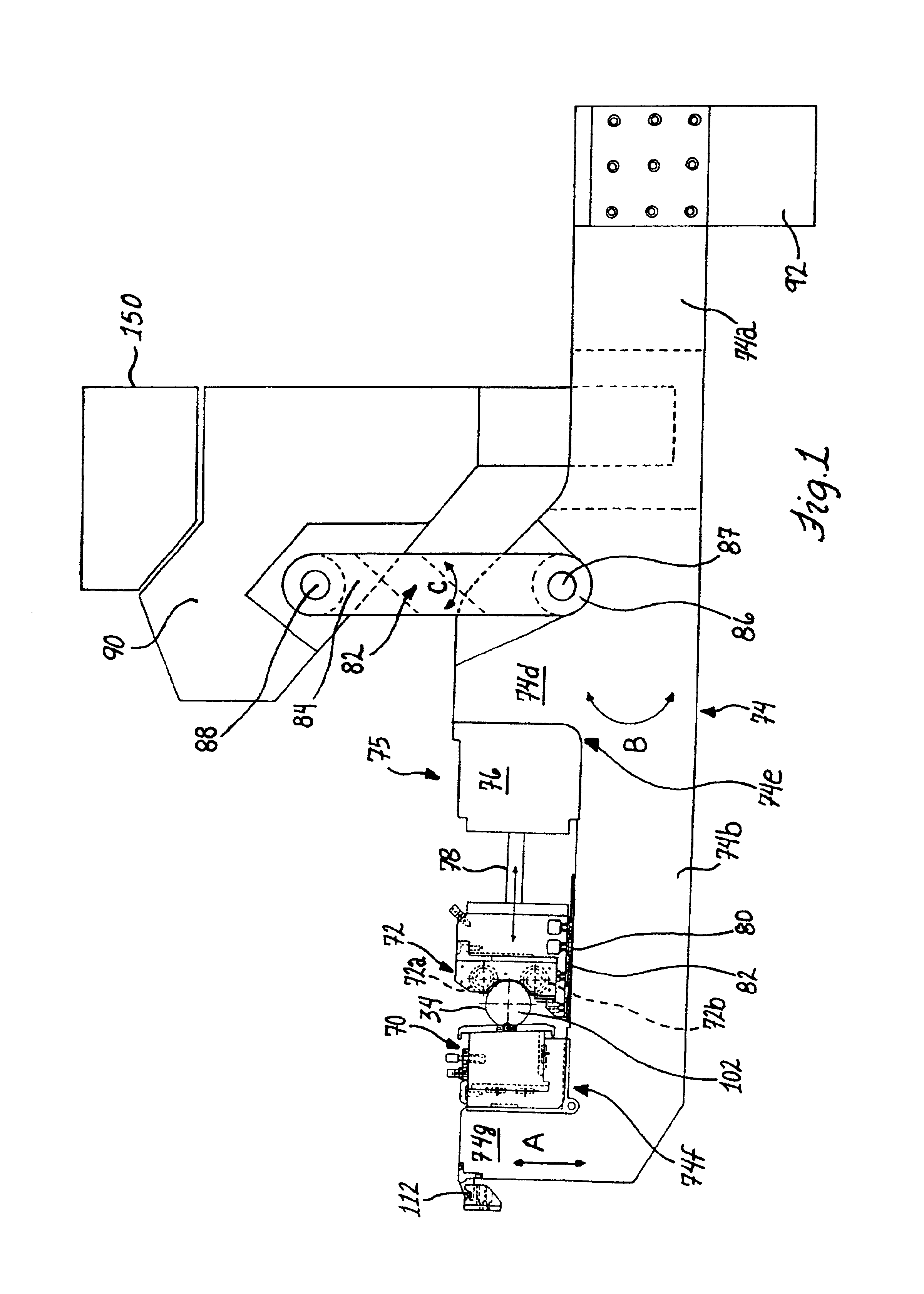Apparatus and method for rolling workpieces
a technology of workpieces and apparatuses, applied in mechanical apparatus, crankshafts, manufacturing tools, etc., can solve the problems of significant impairment of reliability and maintainability of the '893 machine, the difficulty of having the cylinders all fit in a compact fashion, and the number of pivotally mounted cylinders providing potential failure points
- Summary
- Abstract
- Description
- Claims
- Application Information
AI Technical Summary
Benefits of technology
Problems solved by technology
Method used
Image
Examples
Embodiment Construction
[0059]As shown in the drawings for purposes of illustration, the invention is embodied in a machining apparatus 20 for surface rolling or deep rolling of workpieces such as cam shafts or the like but will be described in connection with the deep fillet rolling of crankshafts 22. As best seen in FIG. 2, the apparatus includes an adjustable workpiece rotational and support device or apparatus 24 for supporting, rotating and positioning of the crankshaft relative a plurality of rolling tool assemblies 26. The tooling assemblies 26 deep roll fillets of the main bearings 32 on the crankshaft (FIG. 5A) and fillets of the pins or pin bearings 34 which can be divided into two groups, as will be described more fully hereinafter.
[0060]The adjustable workpiece support apparatus 24 for supporting the crankshaft and for rotating the crankshaft 22 are mounted on a machine base or frame 28 (FIG. 2). The workpiece support apparatus preferably includes a chuck 38 on a headstock and a tailstock or qu...
PUM
| Property | Measurement | Unit |
|---|---|---|
| width | aaaaa | aaaaa |
| distances | aaaaa | aaaaa |
| diameter | aaaaa | aaaaa |
Abstract
Description
Claims
Application Information
 Login to View More
Login to View More - R&D
- Intellectual Property
- Life Sciences
- Materials
- Tech Scout
- Unparalleled Data Quality
- Higher Quality Content
- 60% Fewer Hallucinations
Browse by: Latest US Patents, China's latest patents, Technical Efficacy Thesaurus, Application Domain, Technology Topic, Popular Technical Reports.
© 2025 PatSnap. All rights reserved.Legal|Privacy policy|Modern Slavery Act Transparency Statement|Sitemap|About US| Contact US: help@patsnap.com



